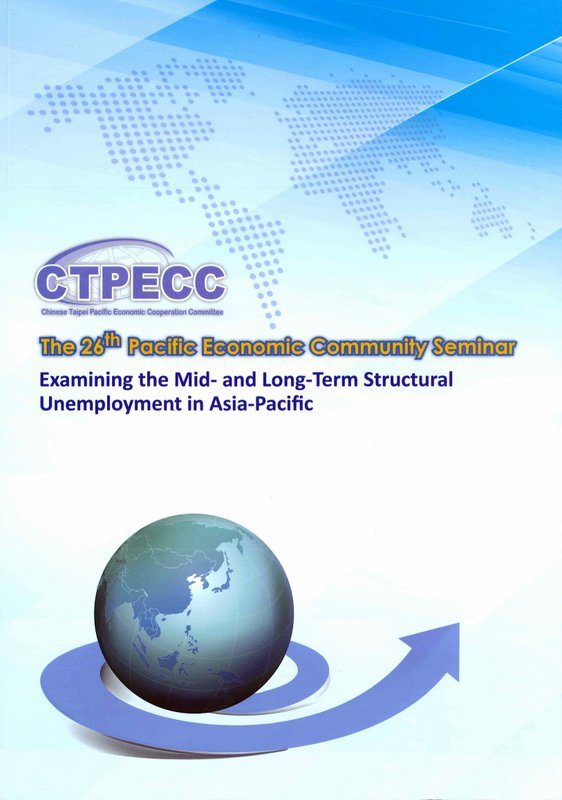 Examining the Mid-and Long-Term Structural Unemployment in Asia-Pacific (2012)
Examining the Mid-and Long-Term Structural Unemployment in Asia-Pacific (2012)
204 pages
ISBN: 978-986-85094-6-7
The global financial crisis that spanned from 2008 to 2009 had serious impact not only on economic dvelopment but also on labor markets of the Asia-Pacific region. Unemployment became one major economic issue during the financial crisis and its impact remain in the post-crisis era. The global GDP growth dropped tremendously in 2008, went down further in the first quarter of 2009, and started to recover since the second half of 2009. However, some global forecasts warn that unemployment rates in most economies will remain high and have great influence on economic security even after the economy started recovering. Therefore, to accelerate the sluggish recovery of job markets is essential for making healthy economic revival as well as maintaining social stability today.
Unemployment as a lagging economic indicator is outperformed by leading indicators in most Asia-Pacific economies, and has become a problem facing many decision makers in the region. In economic theory, unemployment can be classifed into frictional, cyclical, structural, and classical types. The natural rate of unemployment is considered as sume of rates of frictional, structural, and classial unemployment. The cyclical unemployment rate is supposed to be zero when the economy is in full recovery or in a boom. However, in many Asia-Pacific economies, current unemployment rates are still much higher than the pre-crisis level despite a strong GDP upturn, which implies that the unemployment problem is no longer cyclical but structure-related.
Unemployment is not only a critical economic phenomenon but also an extremely urgent issue in social safety nets policy making. Firstly, increasing unemployment, according to Okun’s Law, may result in declining production. Secondly, high unemployment means fewer job opportunities, less income, lower consumption, and worse living conditions. Thirdly, structural unemployed labourers are more difficult to be absorbed in existing labour markets, and this long-term unemployment trend may form a vicious circle where social problems further undermine economic dynamics. That is, poverty, uneven income distribution, family dissolution, high suicide and crime rate could add to fiscal burden of social welfare expenditure and meanwhile hamper economic development.
Furthermore, in the Asia-Pacific region, structural unemployment is an evident phenomenon undermining socioeconomic inclusiveness considering that structural unemployment has greater impacts on vulnerable groups, such as women and unskilled workers. High structural unemployment implies that economic growth in the post-crisis era is constrained in promoting quality of living, and implementing effective policies taking both economic and social perspectives into account has already become governments’ challenge and responsibility. Failing to do so would the profound socioeconomic impacts of structural unemployment issue worsen social divergence and eventually lead to political instability.
To address and study causes and impacts of structural unemployment on the Asia-Pacific region in the post-crisis era, Chinese Taipei Pacific Economic Cooperation Committee (CTPECC) proposed international project: “Examining the Mid- and Long-Term Structural Unemployment in Asia-Pacific”. The 26th Pacific Economic Community seminar (October 2011), on which this publication is based, aimed to: a) examine the structural unemployment issues, phenomena and relevant impacts, b) analyze and explore factors that have caused structural unemployment, and c) identify potential solutions to the problem of structural unemployment in particular economy or the region.
Click to download individual chapters:
1. Table of Contents and Introduction
2. Session I (Australia by Sherry Kong | China by Chen Bo)
3. Session II (Japan by Naoki Mitani | USA by Robert Dekle)
4. Session III (Malaysia by Shankaran Nambiar | Chinese Taipei by Ke-Jeng Lan)
5. Session IV (Hong Kong SAR by James Vere | Singapore by Hui Weng Tat)

 Examining the Mid-and Long-Term Structural Unemployment in Asia-Pacific (2012)
Examining the Mid-and Long-Term Structural Unemployment in Asia-Pacific (2012)